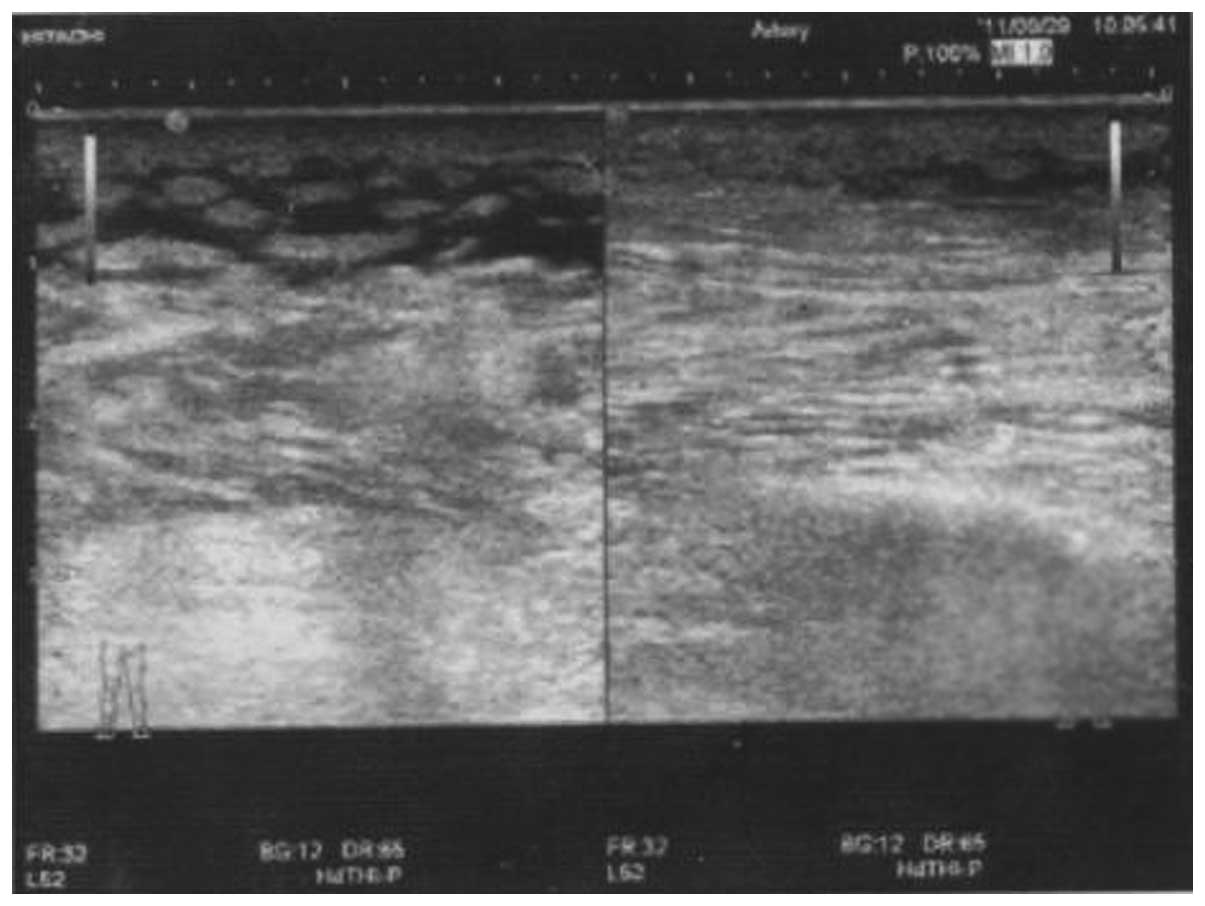Septic shock due to community‑acquired Pseudomonas aeruginosa necrotizing fasciitis: A case report and literature review
- Authors:
- Guang‑Ju Zhao
- Guang‑Liang Hong
- Jie‑Quan Liu
- Yang Lu
- Zhong‑Qiu Lu
View Affiliations
Affiliations: Emergency Department, The First Affiliated Hospital of Wenzhou Medical University, Wenzhou, Zhejiang 325000, P.R. China
- Published online on: March 21, 2014 https://doi.org/10.3892/etm.2014.1628
-
Pages:
1545-1548
Metrics: Total
Views: 0 (Spandidos Publications: | PMC Statistics: )
Metrics: Total PDF Downloads: 0 (Spandidos Publications: | PMC Statistics: )
This article is mentioned in:
Abstract
Necrotizing fasciitis is a rare but fatal infection, characterized by the rapid progression of necrosis of the fascia, skin, soft tissue and muscle. The most common bacteria associated with necrotizing fasciitis is group A streptococcus, although other pathogens have also been implicated. In the present study, a case of community‑acquired necrotizing fasciitis, complicated with septic shock and multiple organ dysfunction syndromes due to Pseudomonas aeruginosa, is presented. Despite intensive medical treatment, the condition of the patient deteriorated rapidly and the patient subsequently succumbed to multiple organ failure. In view of the rapid progression and high mortality rate of this disease, early surgery, as well as novel therapeutic approaches for septic shock are required to improve the outcome for patients.
View References
|
1
|
Sarani B, Strong M, Pascual J and Schwab
CW: Necrotizing fasciitis: current concepts and review of the
literature. J Am Coll Surg. 208:279–288. 2009. View Article : Google Scholar : PubMed/NCBI
|
|
2
|
Akamine M, Miyagi K, Uchihara T, et al:
Necrotizing fasciitis caused by Pseudomonas aeruginosa.
Intern Med. 47:553–556. 2008. View Article : Google Scholar
|
|
3
|
Anaya DA and Dellinger EP: Necrotizing
soft-tissue infection: diagnosis and management. Clin Infect Dis.
44:705–710. 2007. View
Article : Google Scholar : PubMed/NCBI
|
|
4
|
Crawford J, Ozer H, Stoller R, et al:
Reduction by granulocyte-colony stimulating factor of fever and
neutropenia induced by chemotherapy in patients with small-cell
lung cancer. N Engl J Med. 325:164–170. 1991. View Article : Google Scholar : PubMed/NCBI
|
|
5
|
Dellinger RP, Levy MM, Rhodes A, et al:
Surviving Sepsis Campaign Guidelines Committee including the
Pediatric Subgroup: Surviving sepsis campaign: international
guidelines for management of severe sepsis and septic shock: 2012.
Crit Care Med. 41:580–637. 2013.
|
|
6
|
Gaieski DF, Mikkelsen ME, Band RA, et al:
Impact of time to antibiotics on survival in patients with severe
sepsis or septic shock in whom early goal-directed therapy was
initiated in the emergency department. Crit Care Med. 38:1045–1053.
2010. View Article : Google Scholar
|
|
7
|
Rimmelé T and Kellum JA: Clinical review:
blood purification for sepsis. Crit Care. 15:2052011.PubMed/NCBI
|
|
8
|
Honore PM, Jacobs R, Joannes-Boyau O, et
al: Septic AKI in ICU patients. diagnosis, pathophysiology, and
treatment type, dosing, and timing: a comprehensive review of
recent and future developments. Ann Intensive Care. 1:322011.
View Article : Google Scholar : PubMed/NCBI
|
|
9
|
Roberts DM, Roberts JA, Roberts MS, et al:
Variability of antibiotic concentrations in critically ill patients
receiving continuous renal replacement therapy: a multicentre
pharmacokinetic study. Crit Care Med. 40:1523–1528. 2012.
View Article : Google Scholar
|
|
10
|
Mueller SC, Majcher-Peszynska J, Hickstein
H, et al: Pharmacokinetics of piperacillin-tazobactam in anuric
intensive care patients during continuous venovenous hemodialysis.
Antimicrob Agents Chemother. 46:1557–1560. 2002. View Article : Google Scholar : PubMed/NCBI
|
|
11
|
Kobayashi L, Konstantinidis A, Shackelford
S, et al: Necrotizing soft tissue infections: delayed surgical
treatment is associated with increased number of surgical
debridements and morbidity. J Trauma. 71:1400–1405. 2011.
View Article : Google Scholar : PubMed/NCBI
|
|
12
|
Phan HH and Cocanour CS: Necrotizing soft
tissue infections in the intensive care unit. Crit Care Med.
38:S460–S468. 2010. View Article : Google Scholar : PubMed/NCBI
|
|
13
|
Hong GL, Lu CJ, Lu ZQ, et al: Surgical
treatment of 19 cases with vibrio necrotising fasciitis. Burns.
38:290–295. 2012. View Article : Google Scholar : PubMed/NCBI
|











